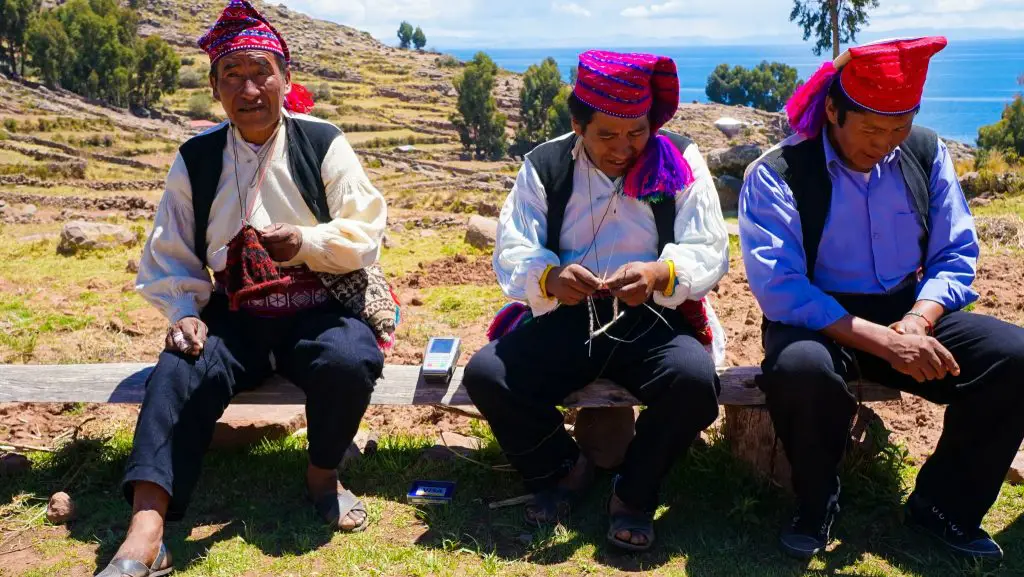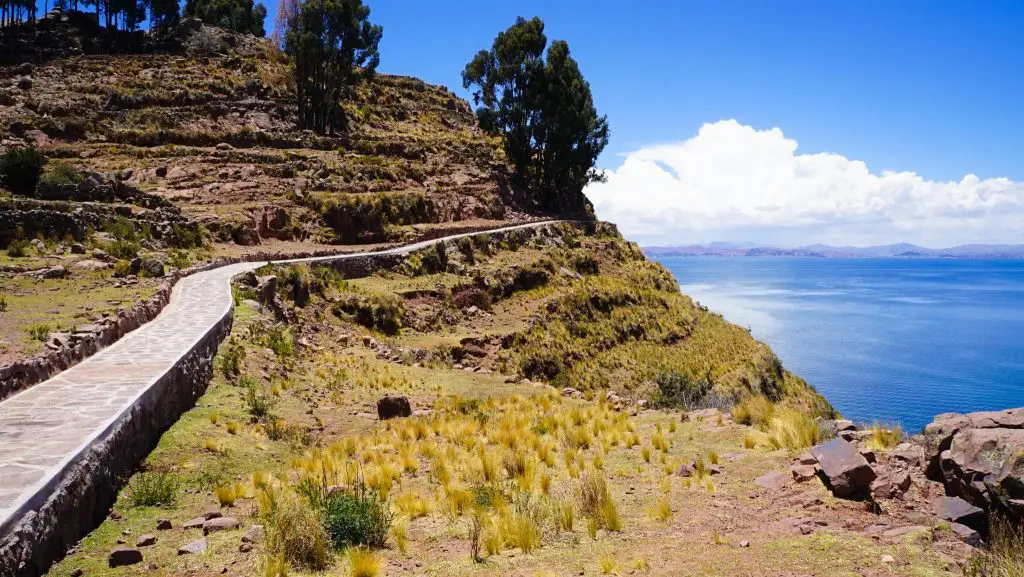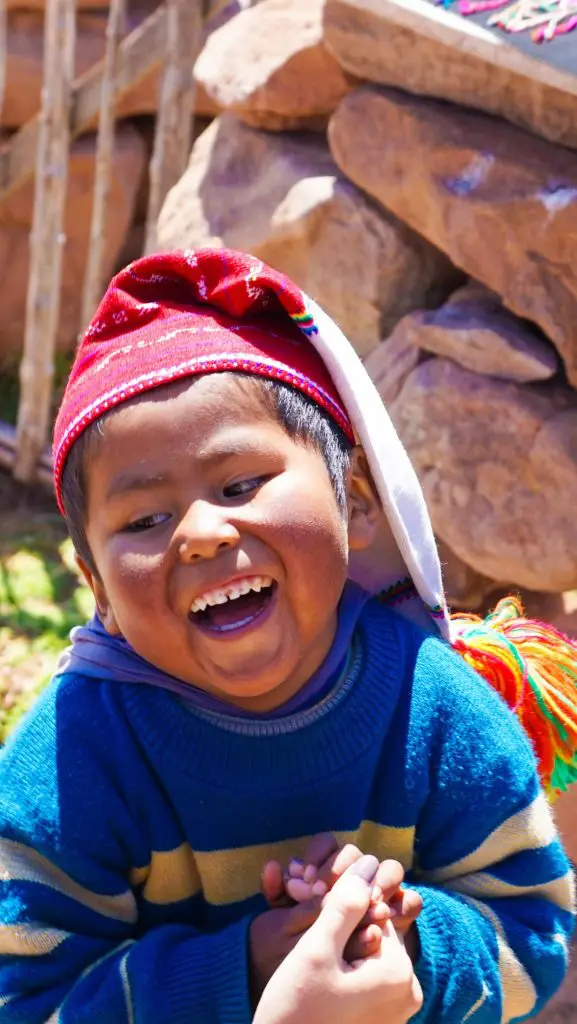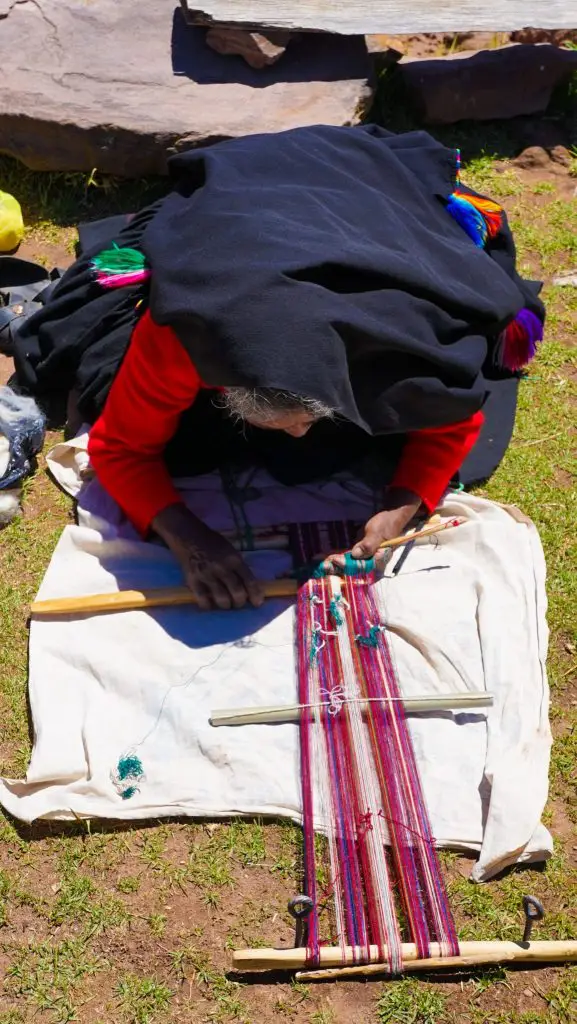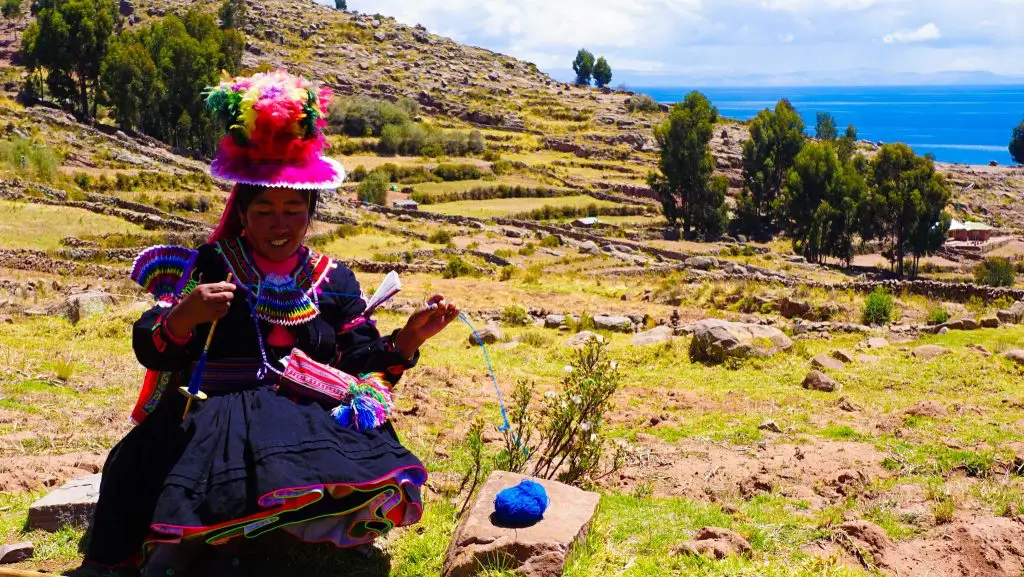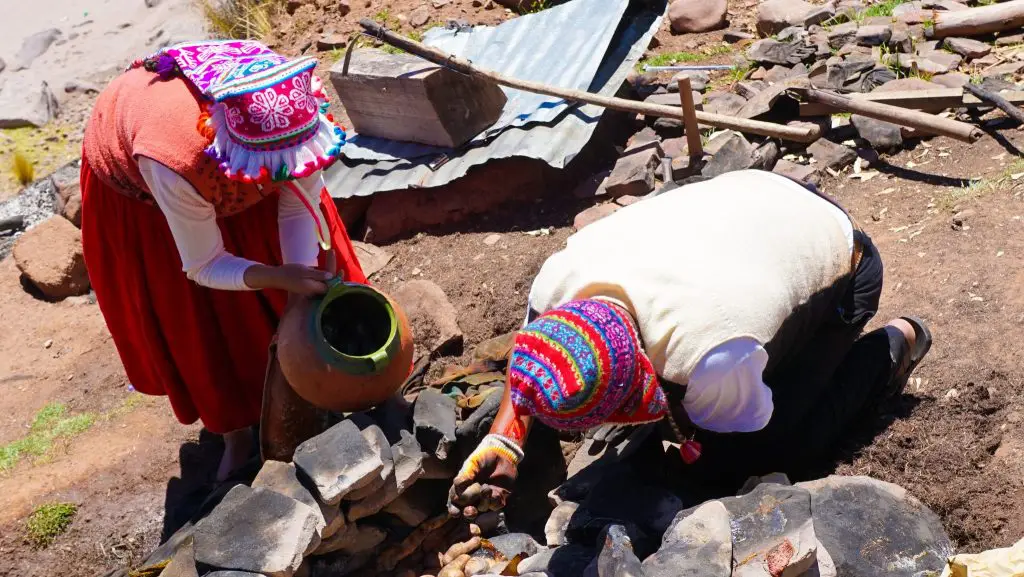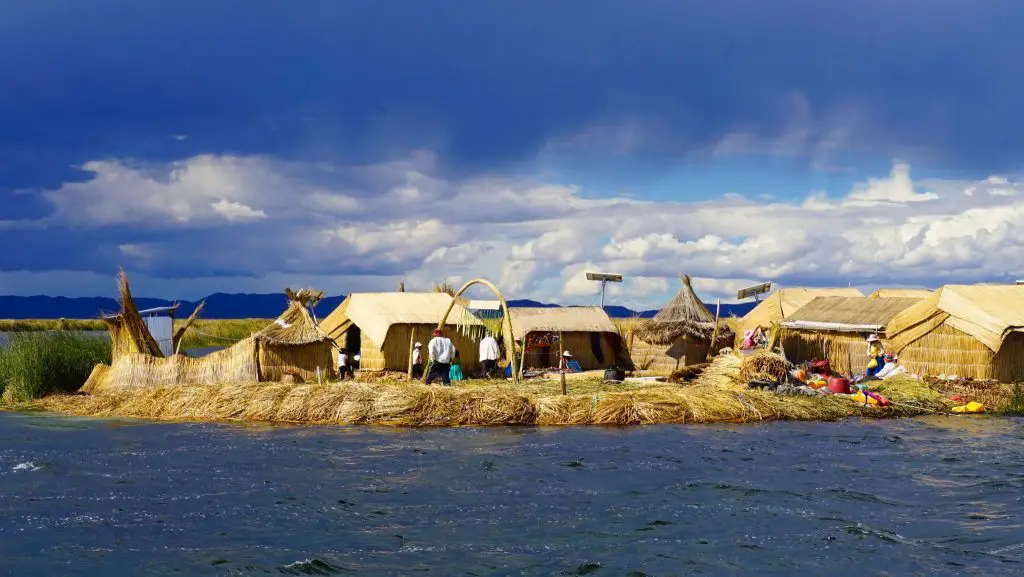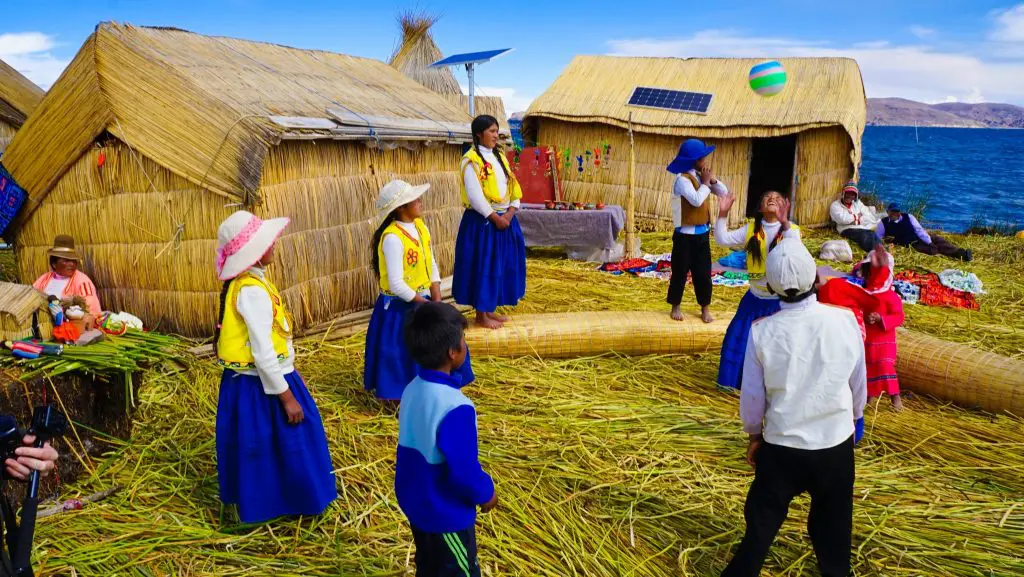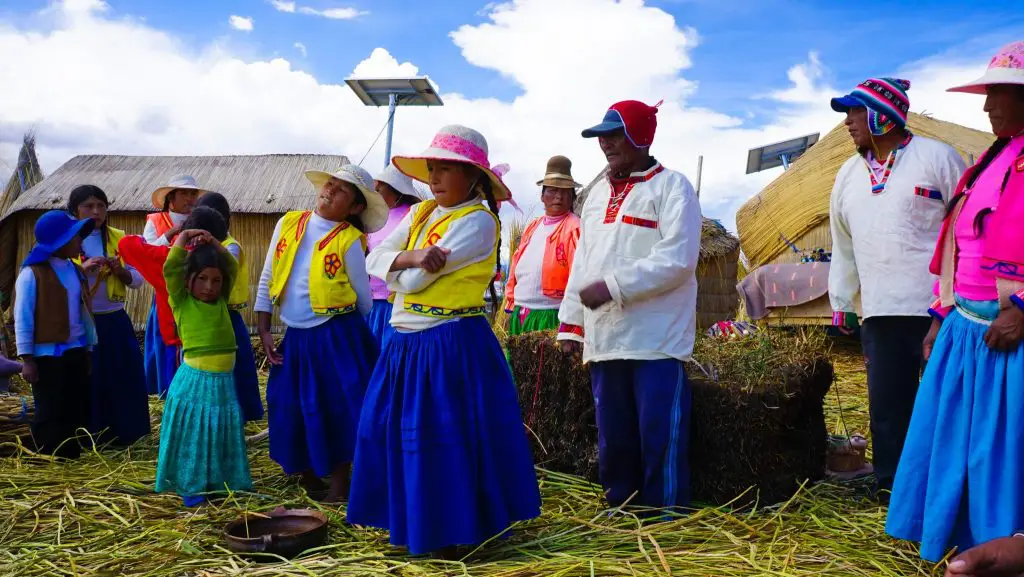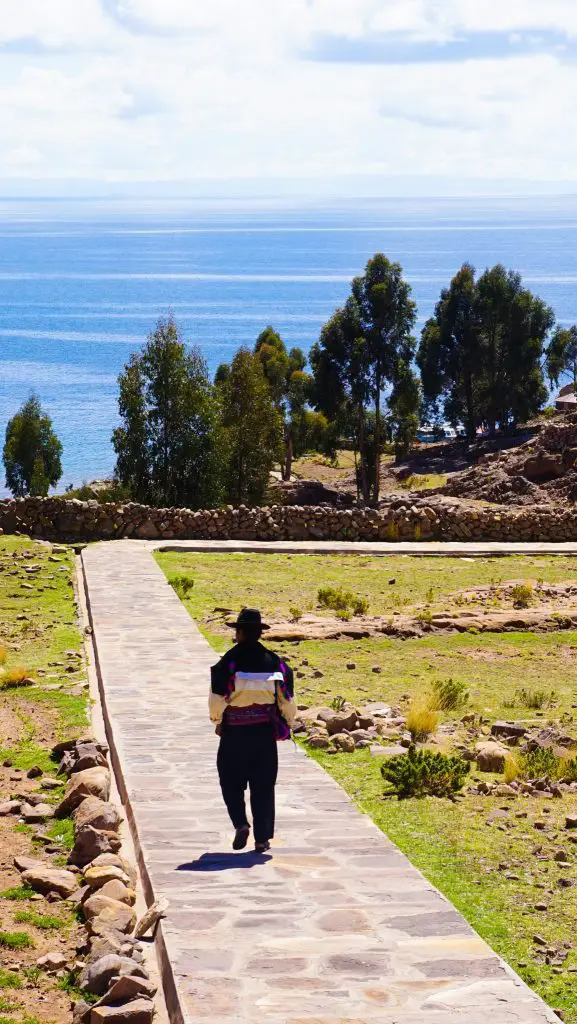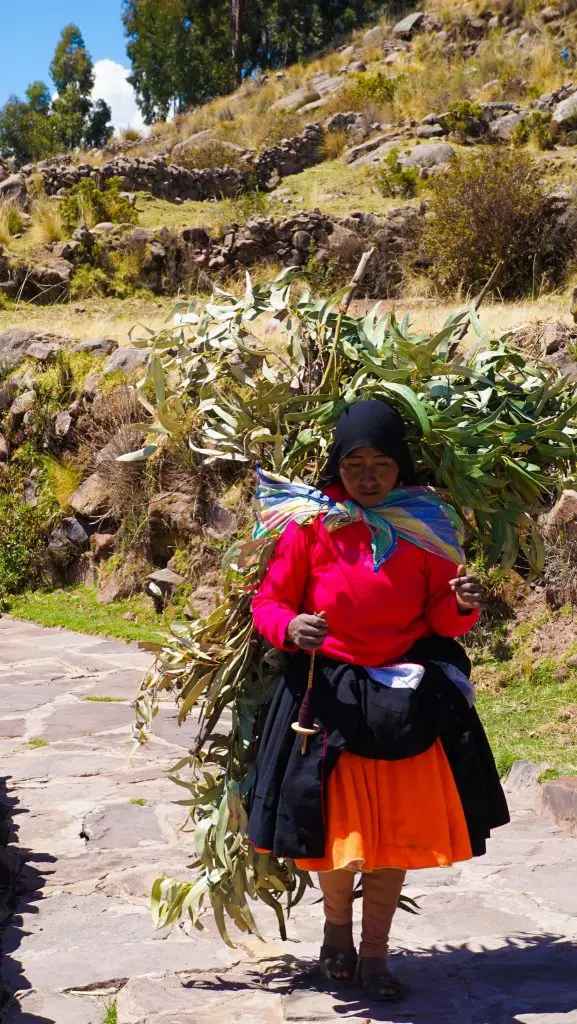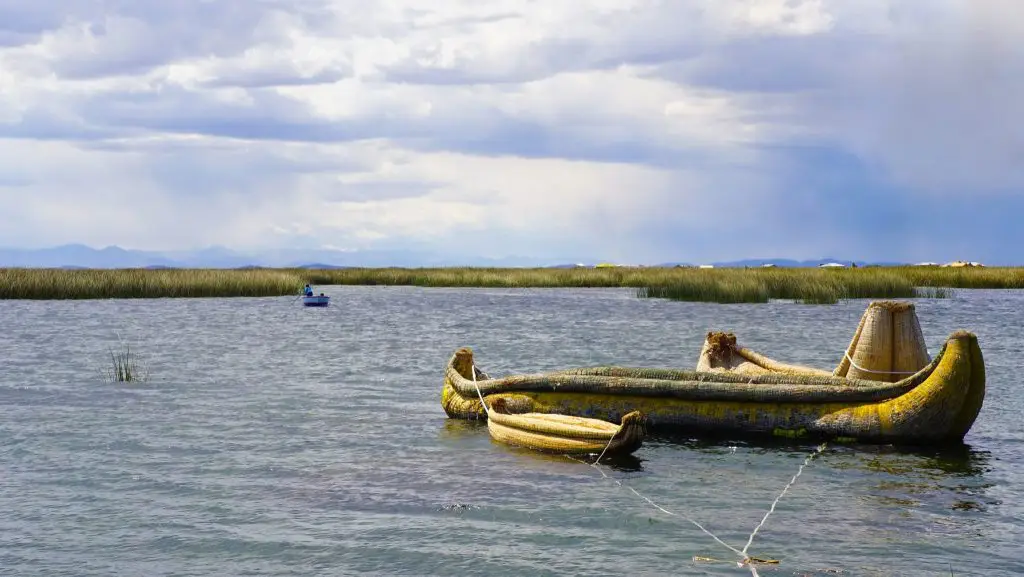Expert travel storyteller Jordan Adkins, founder of InspiredByMaps.com, brings a decade of adventures across 101 countries and 450+ UNESCO sites into rich, off-the-beaten-path narratives, melding ecological expertise with genuine, seasoned travel insights. His full bio can be found here.
At the border of Peru and Bolivia, high in the Andes mountains, an immense, pristine lake shimmers its deep shade of blue – inviting you to explore it further. And that is exactly what we did!
Exploring Lake Titicaca [‘Grey Puma’ in Quechuan – the ancient language of the Inca’s], the largest lake in South America and highest navigable lake in the world, was one of the highlights of our time in Puno in Peru (read about the Bolivian side of Lake Titicaca).
Unspoiled sandy beaches, ancient ceremonies to Pachamama, beautiful customary dancing & weaving, real connections with locals, authentic floating islands and stunning landscapes – These are just a few of the benefits is we got when we opted for an ‘off-the-beaten-track’ trip with Edgar Adventures.
Heading out on our speed boat across the placid lake we passed all the slower boats destined for the fake mass-tourism villages – They simply don’t have the time to get far enough away from it and I felt a pang of sympathy for them.
Our faster boat takes less than an hour to reach our destination while their’s would take 3, and we are only going to see 15% of this ridiculously huge lake! Found at 3809 meters above sea level Lake Titicaca was formed by ancient tectonic forces when the Nazca plate collided into the American and the lake today is still filled with a wide variety of primitive, endemic fish.
It is feed by 7 glacial rivers and has only one outlet on the Bolivian side which keeps the lake level fairly consistent year-round – Only 1 meter variation year round between the wet and dry season.
Lake Titicaca really is huge and on our tour, we got to truly feel the scale of it – 165 km long and 60 km across – you feel like you’re at sea from many points! With such an expanse to monitor it’s no wonder the lake is sailed by smugglers bringing in cheaper goods from Bolivia across the imaginary borders!
Our first stop of the day and a true highlight was the tranquil island of Taquile, far removed from the modern day it is like stepping back into a more peaceful and simpler era. Hard work and co-operation are the core tenants which have sustained on this gorgeous rock in the expansive lake since pre-inca times!
Famed for their textile production and Taquile Island knitting they’re even recognized by UNESCO for their Intangible Cultural Heritage. Edgar Adventures got us away from the crowds, visiting the most secluded and scenic section of Taquile Island to meet with the village leader, joining in with dancing and music and introducing us to everyone we met along the way (including little Franklin – isn’t he adorable!)
On Taquile, we were introduced to much of the traditions and culture of the people here – descended from Incas!
There are far too many stories to relay but one is that all men on the island must be able to knit and make their wives skirts and shawls. Based on the clothing worn here – hat color, skirt and pom-pom size – you can tell a person’s relationship status too! No need for Facebook I guess then!
If you have visited any of the touristy handicraft markets in Peru before this you will quickly realize the high quality on offer here – each item is individually crafted and unique – made and sold only on this island.
By opting for a tour like this you are really helping a community that doesn’t see much benefit from tourism and are really helping them maintain their beautiful way of life.
As I said, this textile tradition is even recognized by UNESCO as being of importance. If you are in the market for a souvenir that will last a lifetime this is the place!
Also, I should note that these communities receive no money from the government and all the infrastructure, schooling, health facilities on the island are from the entrance tickets to the island and sale of textiles! Needless to say I was impressed at this level of self-sufficiency and outlook on life.
On offer here is a unique chance for cultural interaction and exchange, and the opportunity to appreciate the stunning panoramas of this peaceful island in peace!
If you look around Puno you will be offered plenty of low-cost budget tours on the aforementioned ‘slow boats’ but if you do last the 6 hour return boat trip you will be met not by magic but a paradise lost as in the north of the island where a small community decided to embrace mass tourism and now has over 500 people visit daily and 35 restaurants!
Overcrowding is rife and speaking to people later I was disappointed to hear how they regretted going to Taquile Island as they were unable to see any of the magic.
Luckily our group was barely 15 people and we didn’t see any other outsiders the entire time! An experience you won’t get when hiking Machu Picchu or exploring all the things to do in Cuzco unfortunately!
You might also be interested in:
- Peru Hop / Boliva Hop Review: Hop-On, Hop-Off Bus Travel
- Alternative Lima Tour: Exploring Peru’s Capital Off-The-Beaten Track
- Nazca Lines Flight Review: Ancient Desert Drawings From Above
- Swimming with Sea Lions in Lima (Peru)
- An Honest Guide to Machu Picchu by Car on the Cheap!
After three hours on the island, we were all getting a bit hungry so our next stop was on the peninsula of Capachicas: a traditional lunch cooked underground with hot rocks called Pachamanca – not dissimilar to the Māori Hāngī in New Zealand.
We were welcomed by the village’s healer in this remote and scenic area, who performed a ceremonial offering of wine and coca to Pachamama – the Incan Goddess of Earth. In this modern world, we could all do with these reminders for more respect of Mother Earth.
We enjoyed this delicious and uncommon meal with pristine views over Lake Titicaca. While potatoes, fish and meat may be common in Peru, these flavors were anything but due to the underground oven cooking method.
It was such a privilege to be able to experience this traditional dish of Peruvian cuisine usually reserved for sacred days and gatherings.
After lunch we headed to our final stop – a remote area of the National Reserve of Lake Titicaca, to explore the famed Uros Floating Islands of Lake Titicaca. The Uros are actually descendants of one of South Americas oldest cultures who fled to the waters of Titicaca to avoid the Incan Empire which was expanding at the time.
They have lived in this manner for over 700 years and interestingly speak Amyra, a pre-Inca language while the inhabitants of Taquile speak Quechan.There are also many interesting differences between the two groups of people living so close to each other – in terms of culture, economic outlook, and development.
But I’ll leave you to explore and draw conclusions yourself!
We visited the island of Ccapi, far less commercial and little visited than the inner islands and our experience was better off for it. According to official records there are only 6 authentic floating villages which remain, and we visited the smallest one with 45 full-time inhabitants.
The people living here used reeds for everything, in any way imaginable – building, mattresses, paper, boats, soups and even alcohol. Its truly astonishing. I was fascinated by the construction techniques and ingenuity shown by these people, centuries upon centuries of living in the middle of this expansive lake.
Sadly however, life expectancy of people here along with eduction levels, is much lower than the mainland and that of Taquile Island.
Most of the hundreds of closer villages have given up this way of life and now only commute out daily for tourists – personally I found the way of life hard and a little sad, so perhaps this trend is for the best. After this stop it was back to mainland, my head full of new knowledge and questions, and a new appreciation for different ways of life.
You have the option to stay on the islands overnight with some of Edgar Adventures other tours or if you want to stay and explore more of Puno I can highly recommend to you the Pacha Suites in Puno.
We loved staying there with fast WiFi, super-comfortable beds, central location and helpful desk staff for any and all questions. It’s also nice that its very affordable and for the quality, the best deal we could find in Puno by far!
What I loved most about this Taquile Island day tour with Edgar Adventures was its intensive natural and cultural approach, avoiding the main ‘touristy’ locations and getting you into the small local villages.
It is a highly sustainable approach to tourism which spreads around the benefits of tourist dollars and encourages the genuine nurturing of traditional skills and ways of living.
It was also perfectly complemented by our super informative guide who encourages any and all questions! I can wholeheartedly recommend it as a must-see on any Peru itinerary – and why your at it, here are 20 other amazing things to see in Peru!
If you have been on a Taquile Island day tour or to the Uros Floating Islands please let me know your thoughts and opinions in the comments below!
Have you ever seen or heard of anything like this place before? I certainly hadn’t! Luckily our Peru Hop trip stopping in Puno or we might never have seen it!

